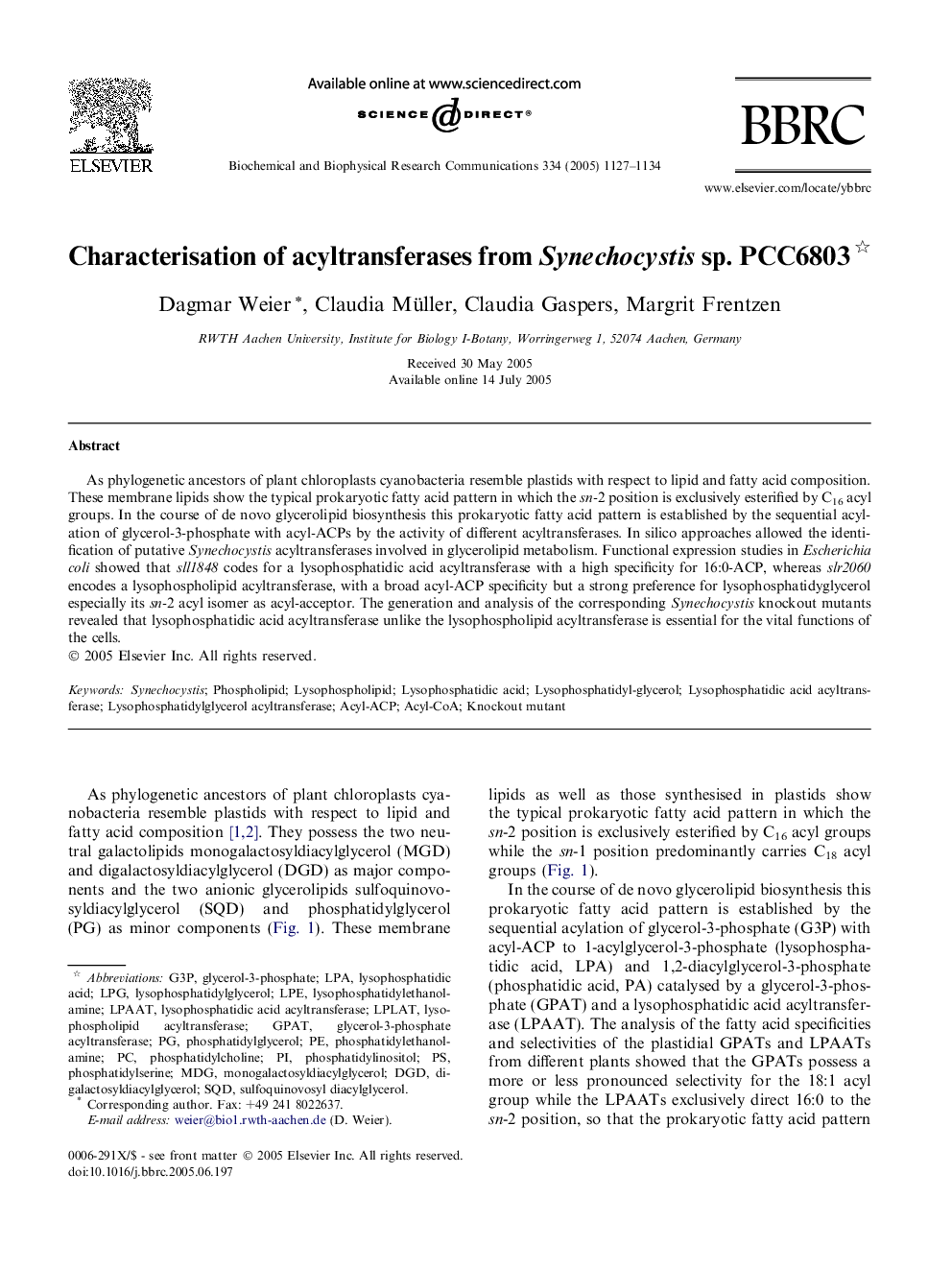| Article ID | Journal | Published Year | Pages | File Type |
|---|---|---|---|---|
| 10769014 | Biochemical and Biophysical Research Communications | 2005 | 8 Pages |
Abstract
As phylogenetic ancestors of plant chloroplasts cyanobacteria resemble plastids with respect to lipid and fatty acid composition. These membrane lipids show the typical prokaryotic fatty acid pattern in which the sn-2 position is exclusively esterified by C16 acyl groups. In the course of de novo glycerolipid biosynthesis this prokaryotic fatty acid pattern is established by the sequential acylation of glycerol-3-phosphate with acyl-ACPs by the activity of different acyltransferases. In silico approaches allowed the identification of putative Synechocystis acyltransferases involved in glycerolipid metabolism. Functional expression studies in Escherichia coli showed that sll1848 codes for a lysophosphatidic acid acyltransferase with a high specificity for 16:0-ACP, whereas slr2060 encodes a lysophospholipid acyltransferase, with a broad acyl-ACP specificity but a strong preference for lysophosphatidyglycerol especially its sn-2 acyl isomer as acyl-acceptor. The generation and analysis of the corresponding Synechocystis knockout mutants revealed that lysophosphatidic acid acyltransferase unlike the lysophospholipid acyltransferase is essential for the vital functions of the cells.
Keywords
Related Topics
Life Sciences
Biochemistry, Genetics and Molecular Biology
Biochemistry
Authors
Dagmar Weier, Claudia Müller, Claudia Gaspers, Margrit Frentzen,
